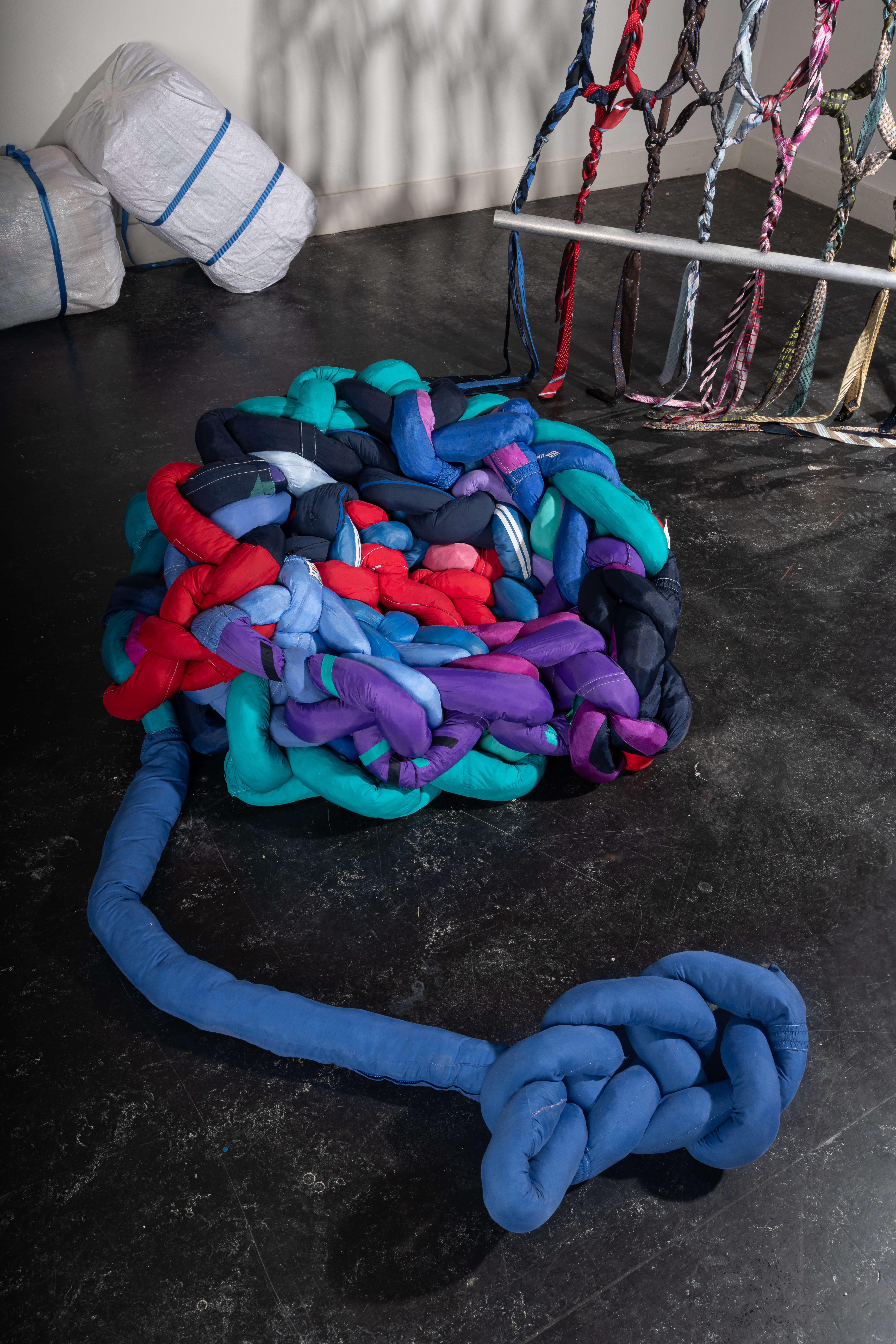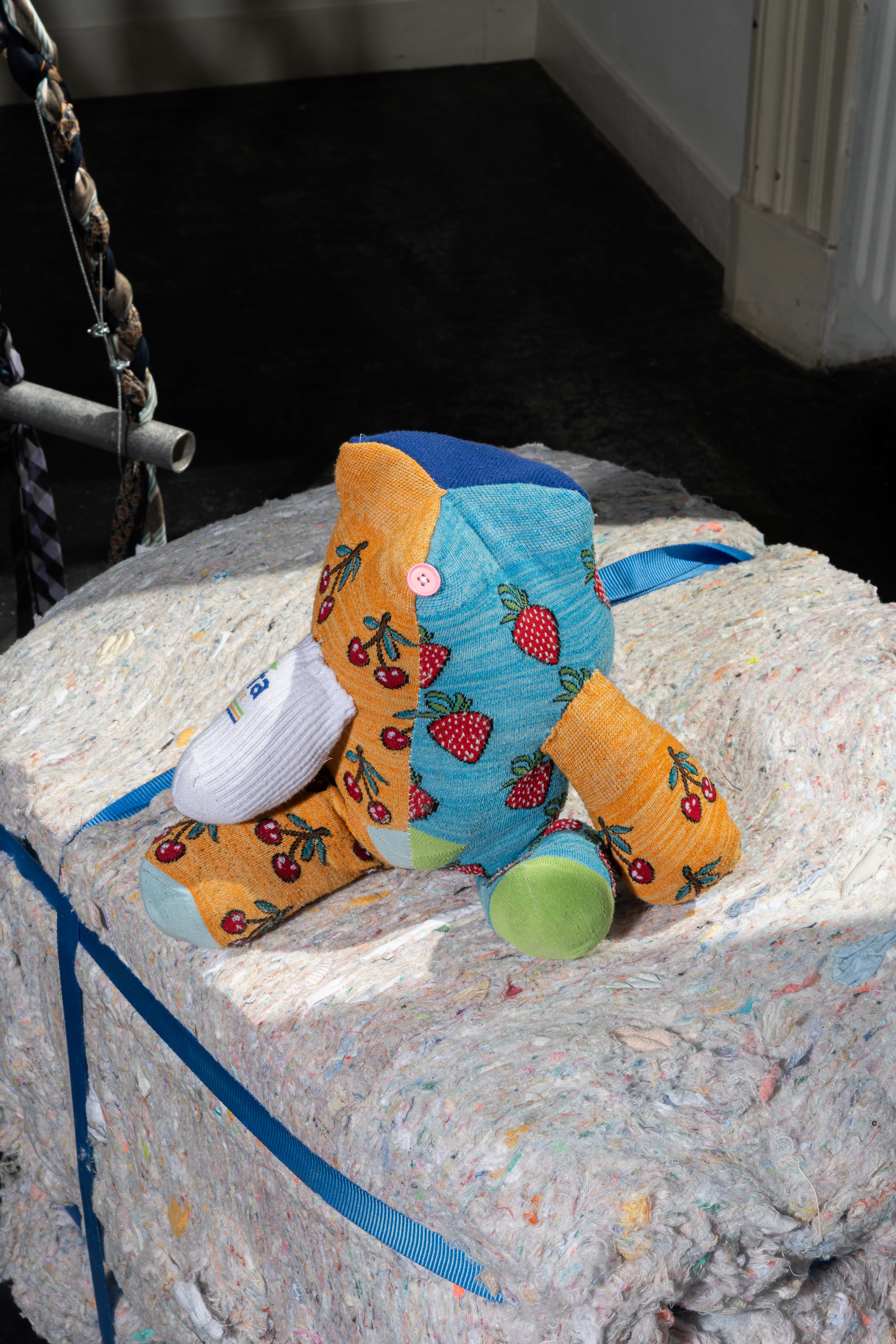‘DEAD’
STOCK
The Ghosts of Our Clothes
–
Lucy Vink
STOCK
The Ghosts of Our Clothes
–
Lucy Vink
We all wear clothes—not only for comfort or coverage, but to express who we are,
what we value, and how we wish to be seen. If clothing carries our identity, what
traces of ourselves remain? Even when discarded, clothing holds memories of its former wearers—marks, stains, and invisible stories embedded in the fabric. Yet in
today’s fast-paced fashion system, these very traces often make second-handclothing undesirable—reducing it to ‘dead’stock.
![]()
While second-hand markets can extend garment lifespans, large volumes still end up in landfills or incinerators. The global second-hand trade—primarily moving from the Global North to the Global South—frequently displaces the issue rather than resolving it. Many garments are sorted and resold, but vast quantities are ultimately deemed unusable. As part of the research, Cirtex—a textile sorting center in Tiel—became a case study. The project focuses on its “category C” items—so-called deadstock—to reflect on our shared urgency around textile waste. Can this discarded material findnew life in a new form, while keeping its history alive?
![]()
![]()
This collection emerges from broader material research, with each of the three objects representing a distinct deadstock stream: Utility (the unusable), Hygiene (the unworthy), and Relevance (the undesirable). Shredded textiles from I-did (a recycling company) are combined with techniques like braiding, knotting, and patchwork, preserving visible fragments of the original garments, keeping their material histories and embedded narratives alive.
These pieces highlight the many faces of deadstock, offering space for overlooked narratives of obsolescence and renewal. To learn more, explore the labels accompanying each piece.
![]()

While second-hand markets can extend garment lifespans, large volumes still end up in landfills or incinerators. The global second-hand trade—primarily moving from the Global North to the Global South—frequently displaces the issue rather than resolving it. Many garments are sorted and resold, but vast quantities are ultimately deemed unusable. As part of the research, Cirtex—a textile sorting center in Tiel—became a case study. The project focuses on its “category C” items—so-called deadstock—to reflect on our shared urgency around textile waste. Can this discarded material findnew life in a new form, while keeping its history alive?


This collection emerges from broader material research, with each of the three objects representing a distinct deadstock stream: Utility (the unusable), Hygiene (the unworthy), and Relevance (the undesirable). Shredded textiles from I-did (a recycling company) are combined with techniques like braiding, knotting, and patchwork, preserving visible fragments of the original garments, keeping their material histories and embedded narratives alive.
These pieces highlight the many faces of deadstock, offering space for overlooked narratives of obsolescence and renewal. To learn more, explore the labels accompanying each piece.
